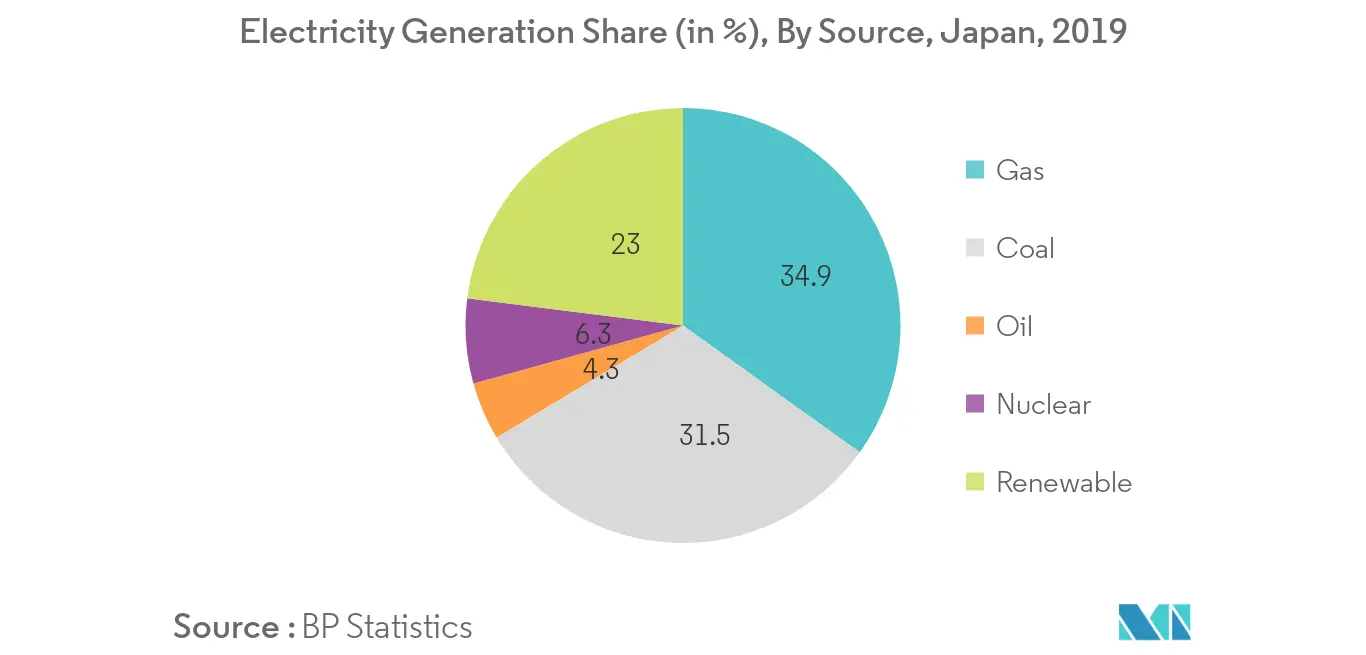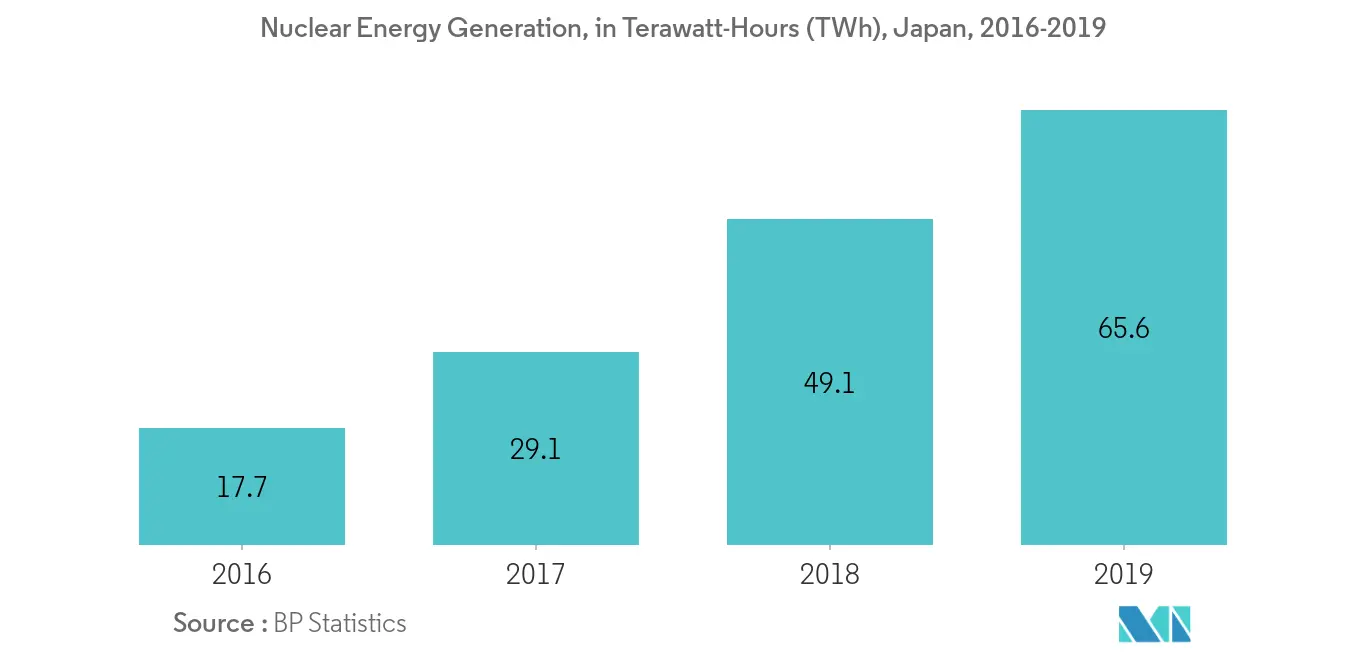Market Trends of Japan Thermal Power Plant Industry
This section covers the major market trends shaping the Japan Thermal Power Plant Market according to our research experts:
Gas Power Plants to Dominate the Market
- Natural gas-fired power plants generate energy by burning natural gas. The country is the largest importer of liquefied natural gas (LNG) and uses a major portion of the LNG to produce electricity. In 2019, the country imported 105.5 billion cubic meters (bcm) of the total imported LNG in the world, which is approximately 21.74% of the LNG imported.
- After 2011 tsunamis, Japan has to close down its most of nuclear power plants, which made Japan use natural gas as a significant source of energy generation to fill the void caused by the dismissal of nuclear power. In the past decade, natural gas emerged as a major source of energy in the country.
- In 2019, the total electricity produced by burning natural gas in Japan was 362.4 terawatt-hours (TWh), contributing to 34.97% of the total energy generated in the country, followed by cola energy. The significant share of natural gas in energy production depicts natural gas's dominance over other thermal energy sources.
- Moreover, the government of Japan in Jut 2020 announced that it would shut down about a hundred inefficient coal-fired power plants by 2030, which is likely to drive the natural gas segment that is more environmentally friendly than coal.
- Hence, owing to the above points, the gas segment is likely going to dominate the Japan thermal power plant market during the forecast period.

Increasing Thermal Power Plants Expected to Drive the Market
- For the last decade, Japan was mostly dependent on nuclear power, but after the incident of 2011, nuclear power in the country drastically reduced. The event made the country review and shut down most nuclear reactors and focuses more on other forms of thermal energy such as coal and natural gas.
- Japan, in 2019 announced 22 coal-burning projects at 17 different sites. These projects are expected to produce electricity using coal. Such numbers of projects in the country related to coal-fired power plants are expected to drive the thermal power plant market during the forecast period.
- In 2019, the nuclear energy generated in Japan was 65.6 Terawatt-Hours (TWh), higher than the nuclear energy production of 2018, 49.1 TWh. After the 2011 tsunami in the country, all the nuclear reactors were put under the reviewing process. In 2015, the two reactors were started, and after which seven more were restarted, while 18 are in the process of getting started. As of 2020, Japan has 33 operable nuclear reactors, two under construction, and 27 shut down. The country plans to increase its nuclear energy share in the total energy up to at least 20% by 2030.
- Hence, owing to the above points, increasing thermal power plants are expected to drive the Japan thermal power plant market during the forecast period.


